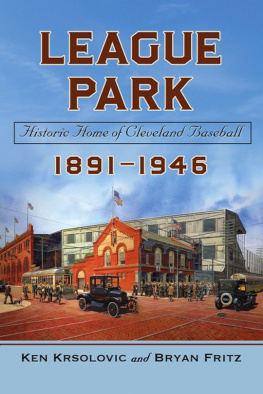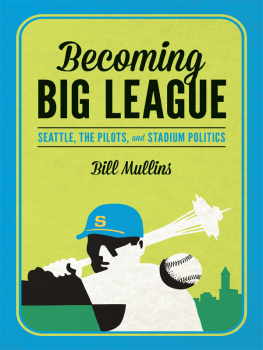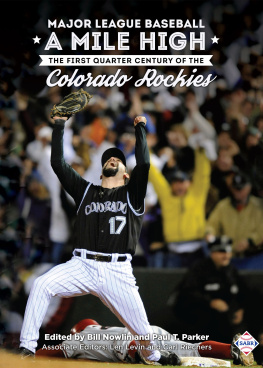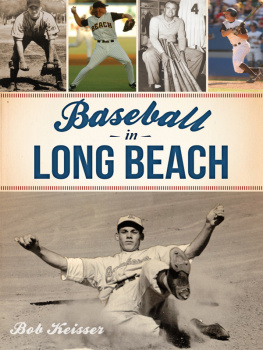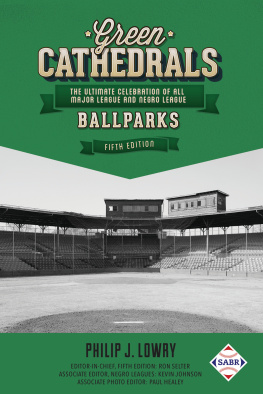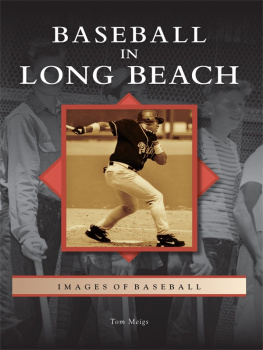
League Park
Historic Home of Cleveland Baseball, 18911946
Ken Krsolovic and Bryan Fritz

McFarland & Company, Inc., Publishers
Jefferson, North Carolina, and London
LIBRARY OF CONGRESS CATALOGUING DATA ARE AVAILABLE
BRITISH LIBRARY CATALOGUING DATA ARE AVAILABLE
e-ISBN: 978-0-7864-9328-9
2013 Ken Krsolovic and Bryan Fitz. All rights reserved
No part of this book may be reproduced or transmitted in any form or by any means, electronic or mechanical, ?including photocopying or recording, or by any information storage and retrieval system, without ?permission in writing from the publisher.
On the front cover: League Park ca. 1920, Jeff Suntala, gouache on illustration board
McFarland & Company, Inc., Publishers
Box 611, Jefferson, North Carolina 28640
www.mcfarlandpub.com
Acknowledgments
On March 3, 1979, Cleveland Plain Dealer sports editor Hal Lebovitz wrote, Undoubtedly a more denitive work will beand should bedone some day about the old park. This book is meant to be just that. It is for Hal and all of the others who played or cheered there, as well as for those who just wish that they had. Heres to ballparks being about watching games and sharing times with our community, friends and families. Heres to League Park ... may its stories and memories never fade!
The number of people who contributed to this project is staggering. Thanks to all of the librarians, researchers, friends and family members who contributed to, supported or inspired this effort. We tried to incorporate all of your input, thoughts and memories. It has taken much longer than anticipated, but we feel that we have cleared up many prior inconsistencies and that the extra time spent has only improved the result. Thanks especially to Rita Fritz and Lisa Krsolovic, whose support and understanding of our love and passion for sports and sporting venues allowed this volume to be completed.
Our thanks go out to many, including the Cleveland Public Library, Western Reserve Historical Society, Burton Historical Society at Detroit Public Library, John Carroll and Case Western Reserve University archives, baseball-reference.com, Pat Kelly of the National Baseball Hall of Fame in Cooperstown, Bob DiBiasio, Les Levine, Karl Fritz, Lindsey Lowman, Charles ONeill, William Mullee, Stanley Kawecki, Tony Ursich, Tim Dembowski and Fred Weisman.
Preface
One of the great things about baseball is that it allows for time to talk. Not just before or after games, but even during games. And theres time even when youre playing. In 1981, a couple of guys on the same slow-pitch softball team in the eastern suburbs of Cleveland started to talk. While conversing on the bench, waiting for their turns to bat, one of them happened to mention his collection of stadium postcards.
It turned out that both had such a collection, along with a keen interest in comparing, visiting and talking about the places where baseball games and other sports were played.
For about the next 25 years, around jobs, moves, wives and kids (and more baseball games), the two continued to talk about ballparks, especially about Clevelands ballparks. During that time, Cleveland Stadium, well-chronicled, was demolished. Jacobs (now Progressive) Field was constructed and quickly became adored. The pair occasionally visited other ballparks and continued to share their interest and observations.
But most of all, these two guys were fascinated by a plot of ground on Clevelands East Side where Major League Baseball used to be played ... League Park. Mere remnants of a ballpark were standing there, along with a declining playing eld. These two guys talked about writing a book about the place. They talked a lot.
Finally, in 2006, while taking a ride downstate to see a game at the then-new ballpark in Dayton, the talk started to get more serious. Bryan, a prosecutor for the city of Cleveland, began to spend lunch hours combing the newspaper archives at the Cleveland Public Library. In early 2008, Bryan met Ken for lunch at the legendary Slymans restaurant on the near East Side of the city. Bryan handed Ken a rough draft. And rough it wasa series of stories and anecdotes that he had compiled and uncovered. But what a compilation to begin with! A former college sports information director and now an athletic director, Ken began to build a body on the skeleton.
Little did they realize how much work was still left to be done. Whenever it seemed that completion was nearing, more new sources and information would seem to appear. Questions arose from conicting sources. More clarications or additions from previous writings were addressed.
The goal of the book became to be as comprehensive as possible, although this meant relying almost entirely upon published sources, some well over a hundred years old. There just werent the people around anymore to check facts with or conrm anything with any real credibility. As such, the research at times was painstaking. Many individuals were, in fact, found with memories of having attended games there. And those shared memories became parts of the bits and pieces that seemed, at times, to be overwhelming. But the further the project went, the more clear it became that the story of the ballpark needed to be told. That conrmation is what kept the project going.
In late 2010, Bryan came across a series of articles about the ballpark from the Cleveland Press in 1953. Those served as a perfect cross check to the project. In 2011, a tting end to the project was provided by the city of Cleveland, as it approved a plan to resurrect the grounds after decades of failed attempts.
And so a long-standing goal has been fullled for a couple of friends. To future researchers, the hope is that much has been added here. And its likely that further nds will be made. But perhaps, at least, the tales and events described here will show why League Park deserves to be remembered.
Introduction
To many baseball fans, Americas ballparks have come to be as revered as the athletes who play in them and as important as the actual games that occur inside their walls. Whether its a venerable park from the early 20th century concrete-and-steel era or some multi-purpose stadium from the latter half of that century, sports fans of this nation have come to revel in the nostalgia of these places where their memories were made.
Reverence for ballparks is a phenomenon that seemingly began in the late 1960s and has continued to gain momentum into the new millennium. Unfortunately, places like Ebbets Field and the Polo Grounds were not largely celebrated when their histories ended. Their passing was certainly noted, but their demise was not marketed by the teams that called them home. By the time that edices such as Shibe Park and Forbes Field had reached their end in the early 1970s, however, fans had become interested in that one last look. In turn, teams began to realize that celebrating the old venue could be as much of an attraction as the opening of the new site.
League Park in Cleveland was hardly recognized as its major league days wound down after World War II for two primary reasons. First, the facility was not going away. Secondly, League Park had been on the brink of replacement for some 15 years. And indeed its run as a ballpark never really ended. Clevelands legendary eld is unique in that the site was used for baseball well before places like Shibe, Forbes and the rest ... and its usefulness was extended for many decades after the big leaguers left. Unlike most of those from the classic era of baseball diamonds, Clevelands hallowed space has died the slowest death of any major league site. No wrecking ball or dynamite implosion would end its use. And it may still survive as a ballpark long into the future as the result of a modern miracle cure. Only because it had managed to hold on for so long does it have the opportunity to yet be reborn.
Next page
